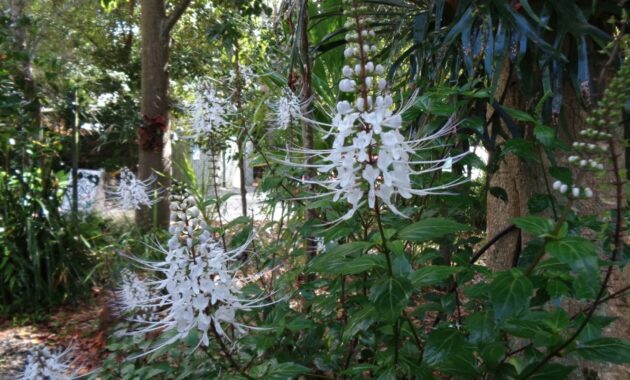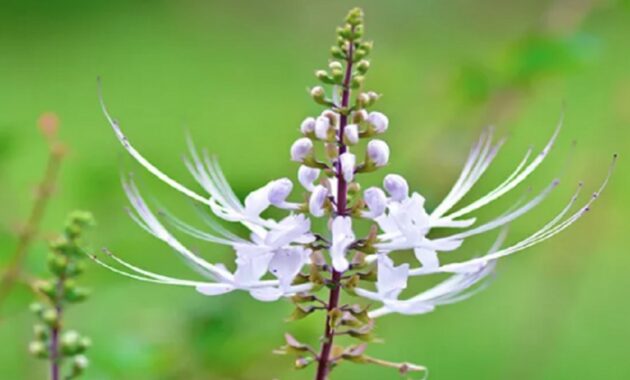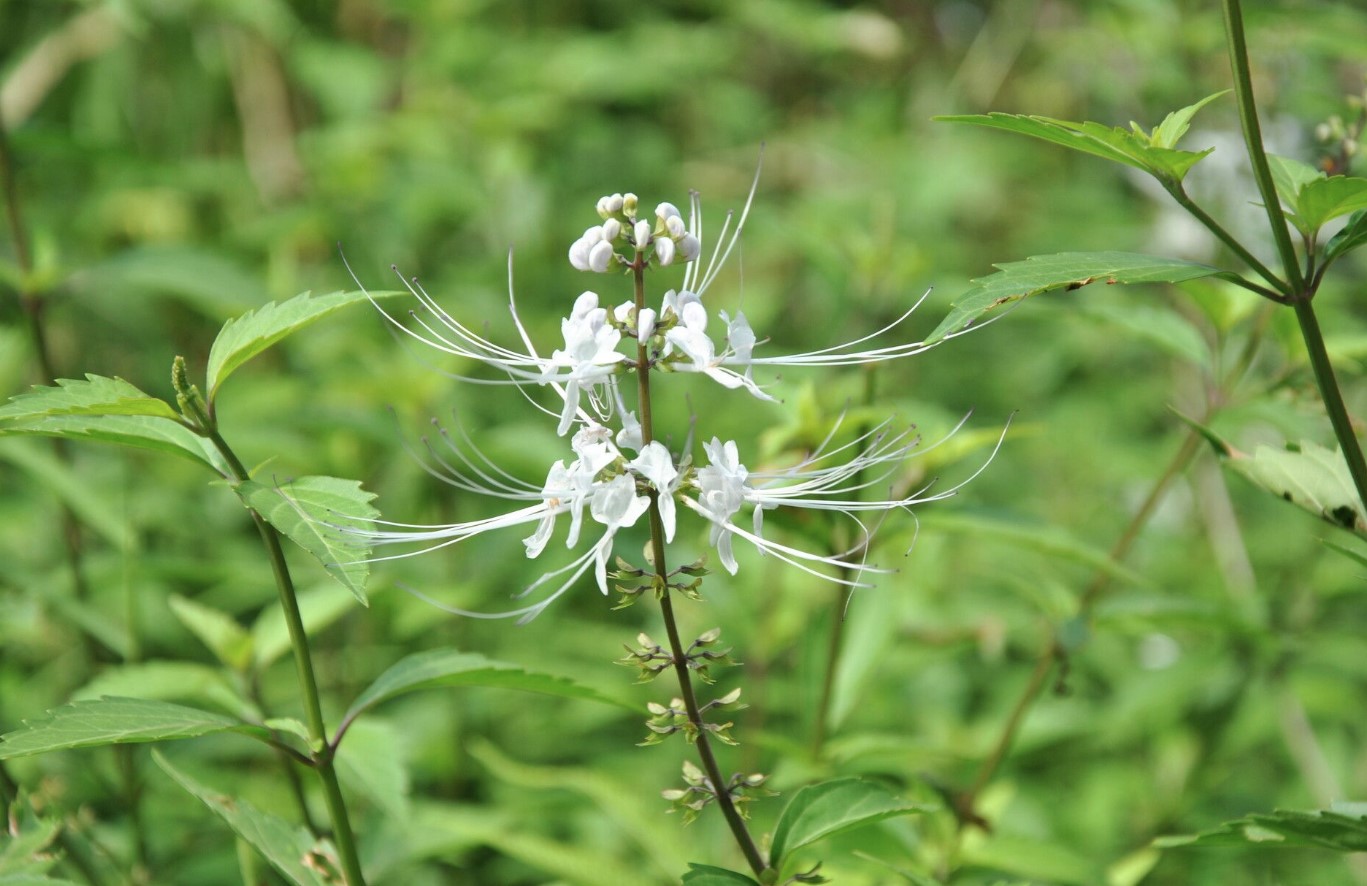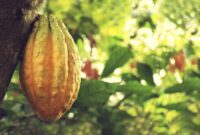
If you’re in search of a plant that boasts both aesthetic appeal and numerous health benefits, let me introduce you to Orthosiphon aristatus, commonly known as Java tea or cat’s whiskers. My journey with this remarkable plant began quite unexpectedly. While wandering through a local herbal shop, I stumbled upon a box of dried cat’s whiskers tea. Intrigued by the unique name and the beautiful packaging, I couldn’t resist trying it out. Little did I know that this experience would lead me to cultivate this lovely plant in my garden!
What is Orthosiphon aristatus?
Orthosiphon aristatus is a flowering plant in the mint family, Lamiaceae, native to Southeast Asia. It’s particularly prevalent in countries like Indonesia, Malaysia, and the Philippines. This perennial herb is characterized by its striking, long, white flower spikes resembling the whiskers of a cat—hence the common name. I remember the first time I saw it in bloom; those delicate, feathery flowers were so enchanting that I had to have it in my garden!
Characteristics of Orthosiphon aristatus
- Scientific Name: Orthosiphon aristatus
- Common Names: Java tea, cat’s whiskers, kidney tea
- Native Range: Southeast Asia
- Growth Habit: It can reach a height of 1 to 1.5 meters (approximately 3 to 5 feet) and has a bushy growth habit.
- Leaves: The leaves are dark green, ovate, and have a pleasant minty aroma. I was pleasantly surprised when I first crushed a leaf between my fingers; the fragrance was invigorating!
Growing Orthosiphon aristatus
Growing Orthosiphon aristatus can be a rewarding experience, especially if you appreciate herbal remedies. Here are some essential tips for cultivating this beautiful plant:
- Climate Requirements: This plant thrives in warm, tropical climates. It prefers temperatures between 20°C and 30°C (68°F to 86°F). I made the mistake of planting mine too early in spring, and a late frost set me back a bit. Now, I wait until the danger of frost has passed!
- Soil Preferences: Orthosiphon aristatus enjoys well-draining, loamy soil. It’s also tolerant of various soil types, but good drainage is crucial. I learned that adding compost not only enhances soil quality but also encourages healthy growth.
- Light Conditions: Full sun to partial shade is ideal for this plant. When I placed mine in a sunny spot, it flourished beautifully, producing an abundance of flowers. Just a tip: If you notice leggy growth, it might be craving more sunlight!
- Watering Needs: The plant requires moderate watering. Keeping the soil consistently moist but not waterlogged is key. I once overwatered my first batch, leading to root rot, so now I check the soil moisture with my finger before watering.
Propagation of Orthosiphon aristatus
If you’re eager to propagate Orthosiphon aristatus, you’ll find that it’s quite simple. Here are two methods you can try:
- Seed Propagation: While you can grow it from seeds, germination can be erratic. I’ve had mixed results with this method. Patience is key—sometimes, the seeds take longer than expected to sprout.
- Cuttings: My favorite way to propagate this plant is by taking cuttings from a healthy, mature plant. I cut about 10 to 15 cm (4 to 6 inches) from a stem, removed the lower leaves, and placed it in a glass of water. Within a few weeks, I had a new plant ready to pot!
Caring for Orthosiphon aristatus
To ensure your Orthosiphon aristatus thrives, here are some essential care tips:
- Fertilizing: A balanced, slow-release fertilizer every couple of months during the growing season will keep your plant healthy. I usually start fertilizing in early spring and continue until late summer for the best results.
- Pruning: Regular pruning promotes bushier growth and helps maintain its shape. I typically trim back my plants in late winter before new growth starts. It’s quite satisfying to see how quickly they bounce back!
- Pest Management: Keep an eye out for common pests such as aphids and spider mites. I once discovered spider mites on my plants after a hot spell. A simple solution was to spray them off with water and follow up with neem oil for prevention.
The Herbal Benefits
One of the reasons Orthosiphon aristatus is so cherished is its medicinal properties. In traditional medicine, it has been used for various ailments, particularly related to the kidneys and urinary system. Here are some potential health benefits:
- Diuretic Properties: It’s known for its ability to promote urination, which can help in flushing out toxins from the body. This is why it’s often referred to as kidney tea.
- Anti-inflammatory Effects: The plant is believed to have anti-inflammatory properties, which can be beneficial for various health conditions. I like to brew a cup when I’m feeling a bit under the weather.
- Rich in Antioxidants: Like many herbs, Orthosiphon aristatus is packed with antioxidants, which help combat oxidative stress in the body. I often remind friends to include this in their herbal regimen for an extra health boost.

Culinary Uses
You may not realize this, but the leaves of Orthosiphon aristatus can be used to make a delicious herbal tea. The taste is mild and refreshing, making it a great alternative to regular tea. Here’s how I prepare it:
- Dried Leaves: If you have dried leaves, steep 1-2 teaspoons in hot water for about 5-10 minutes. I usually add a bit of honey for sweetness.
- Fresh Leaves: You can also use fresh leaves to brew tea. Just crush a few leaves to release their essential oils before steeping.
Common Challenges
While Orthosiphon aristatus is relatively easy to grow, there are some challenges to be aware of:
- Sensitivity to Frost: This plant is not frost-hardy, so if you live in a cooler climate, you’ll want to bring it indoors during colder months. I made the mistake of leaving mine outside too late into the fall and lost a few plants.
- Overwatering: As mentioned earlier, overwatering can lead to root rot. I recommend using pots with drainage holes to help manage water levels effectively.
Final Thoughts
Orthosiphon aristatus is a delightful plant that offers both beauty and health benefits. Its lovely flowers, aromatic leaves, and versatility in herbal tea make it a wonderful addition to any garden.
Whether you’re looking to cultivate it for its medicinal properties, its unique appearance, or simply as a beautiful ornamental plant, Orthosiphon aristatus has something to offer everyone. So why not give it a try? You might find that it becomes a cherished part of your garden, just as it has in mine!
If you have more requests or need additional details about this or any other plant, feel free to ask!



